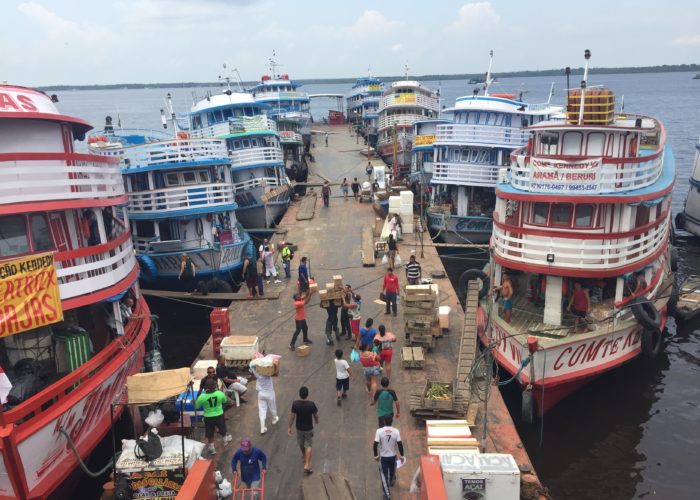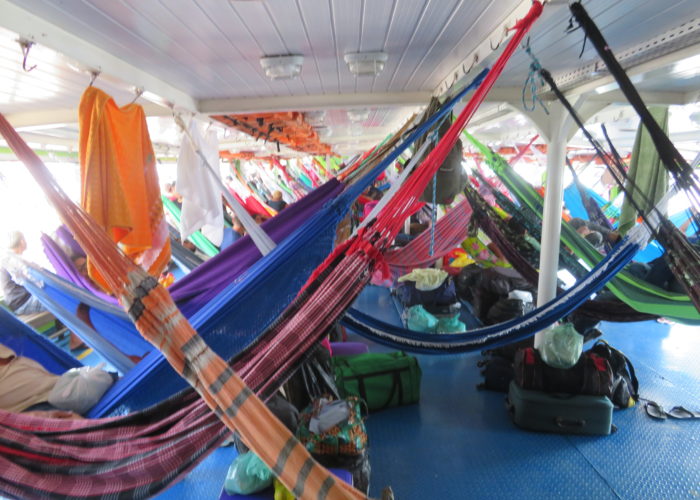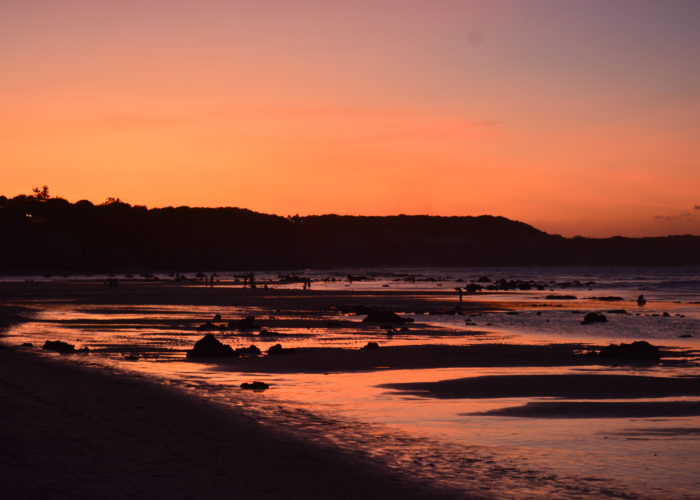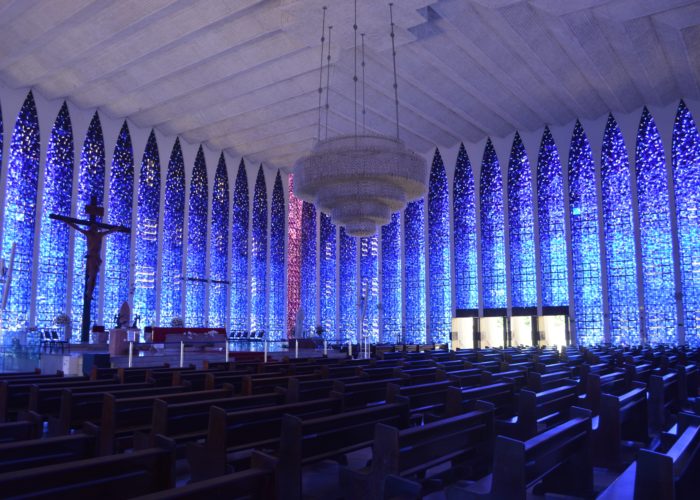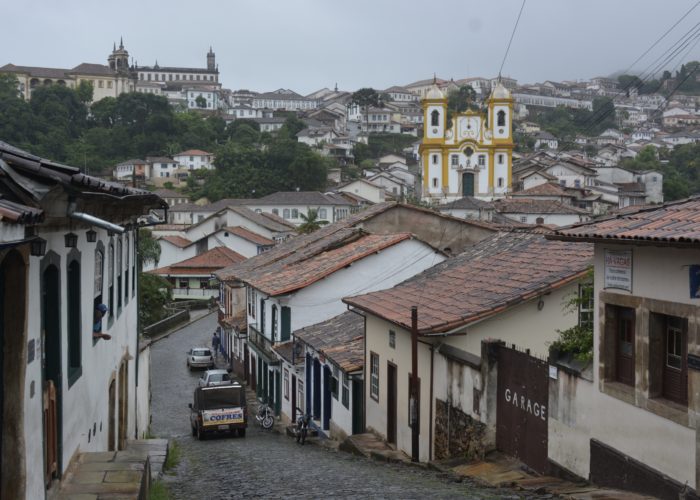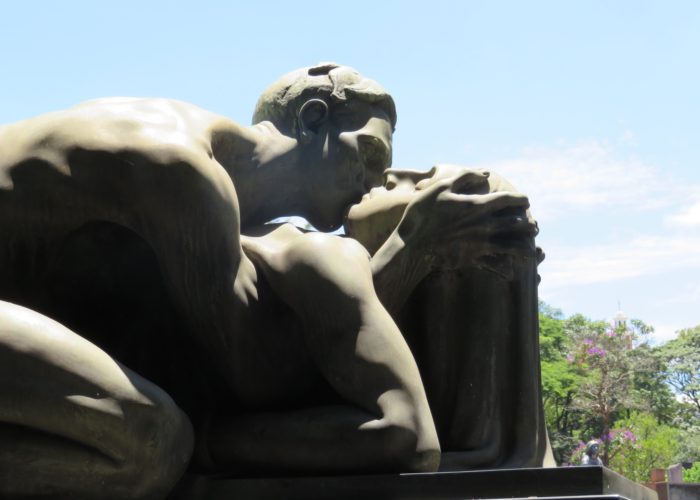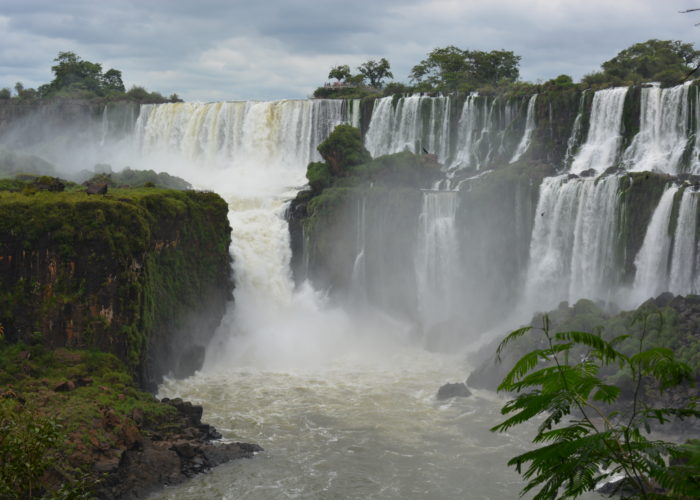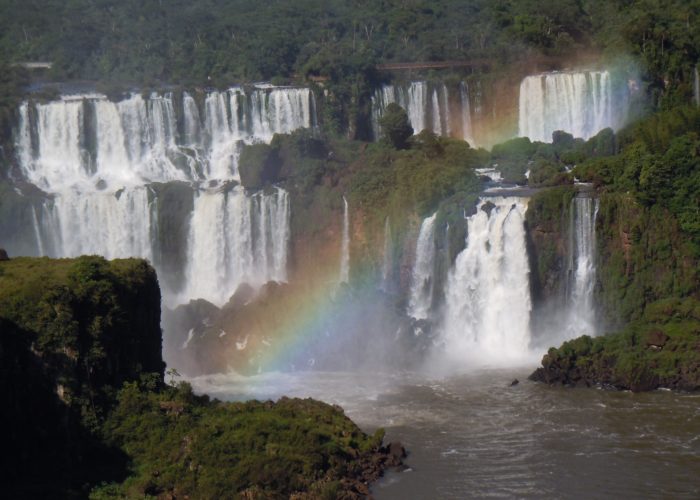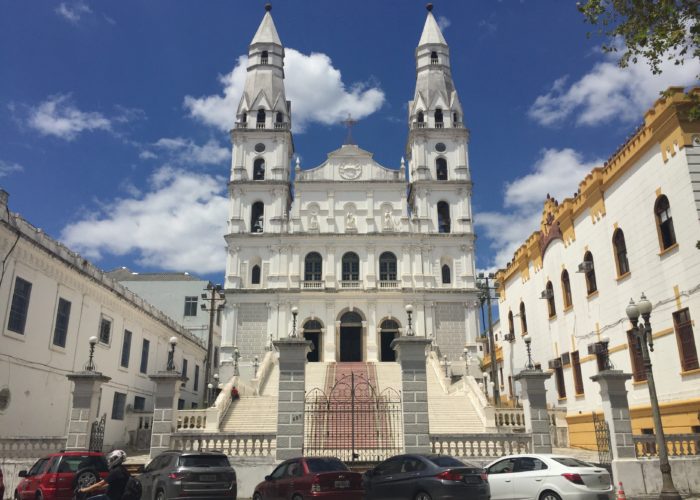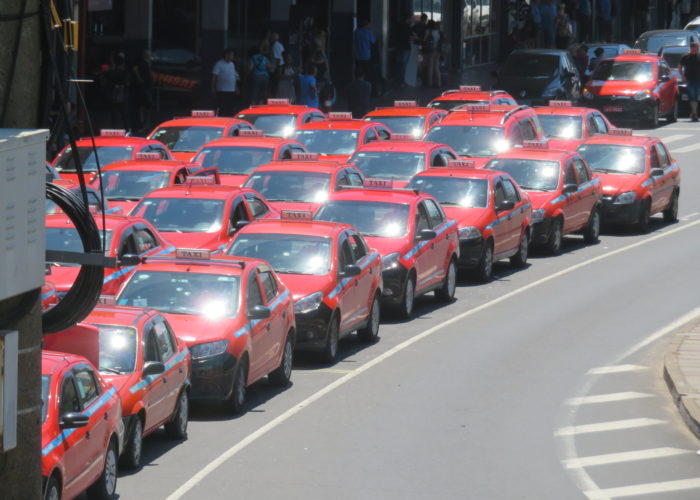Brazil is vast snd has so much more to offer than the bucket list destinations of Rio de Janeiro and Iguaçu Falls. Brazil’s population is over 200 million and while the country has suffered a number of years of recession, the Brazilians are great travellers across their country and everywhere you will meet many more Brazilian tourists than foreigners especially away from the main destinations.
Brazil’s coastline is very well supplied by many fantastic beaches and Brazilians certainly know how to make the most of their beaches. While Brazil’s largest cities are probably familiar to most football fans following the 2014 World Cup, there are 17 cities with a population of over a million and 50 over half a million. São Paolo with a population of over 12 million is the largest city in the Southern Hemisphere and is the economic power house of Brazil, while Rio de Janeiro with 7 million is the undoubted party capital with one of the most beautiful settings of any city in the world.
While Brazil undoubtedly has a security problem especially in the favelas and parts of its cities, sensible precautions and avoiding certain neighbourhoods mitigate that risk. Brazil’s population is generally very inclusive and go out of their way to make you most welcome in their country. At first the Portuguese language used in Brazil can be quite daunting, especially for those with limited language skills, but with rudimentary Spanish an application of logic and a willingness to try it out can go a long way and further enhance your experience in Brazil.
Destinations

- Manaus
- Amazon Delta, Macapá & Belém
- São Louis
- Parque Nacional de Lençóis
- Jericoacoara
- Canoa Quebrada
- Praia de Pipa
- Olinda
- Salvador de Bahia
- Praia de Forte & Itacaré
- Parque Nacional de Chapada Diamantina
1. Manaus

Manaus is one of those iconic places in all the childhood geography books. Today it is a town of nearly 2 million and while there are now road connections to the rest of Brazil, the journeys are long and often impassable in the wet season, thus very much as before the Amazon acts as the main communication artery with the rest of Brazil and the world. Manaus sits some 1,600 kilometres from the sea, and the ferry takes over three days to reach Belém at the mouth of the Amazon.
The waterfront in Manaus is the hub of the city, with ferries and ocean going ships plying their trade. The Central Market is full of produce from the Amazon. Many of the fish are unique to the Amazon and laid out on the multiple fishmonger stores make a spectacular sight. A few minutes away from the river front is Praca São Sebastião is the Teatro Amazonas, the city’s most famous building, which is while totally incongruous is a symbol of the confidence and commercialism of the rubber boom in the late 19th Century.
Manaus also is a great starting point for jungle tours in the Amazon where you can see the river dolphins, numerous monkeys and abundant bird life. Larger animals are much harder to see due to the dense jungle foliage. The joining of the rivers where the Amazon meets the Rio Negro is another not to be missed site where the yellow muddy waters of the Amazon meet the dark waters of the Rio Negro and flow alongside each other until finally merging further downstream.
2. Amazon Delta, Macapá & Belém

Sitting on either side of the Amazon delta are the cities of Macapá and Belém. Both are significant cities that with defensive forts and make their living from the produce of the Amazon. Belém is connected to the rest of Brazil by road and is the last significant town before the roads largely run out in the Amazon. Macapá is connected to French Guiana by road, but not the rest of Brazil, thus all traffic flows by the river and sea. The ferry crossing between the two is a major experience, taking some 26 hours and covering over 560 kilometres as it navigates through the channels around Ilha de Marajó.
The old fort in Macapá has been beautifully restored complete with the old barracks and religious buildings with their whitewashed paint. Belém is another of Brazil’s monster cities of over 2 million and is retains some of its old colonial architecture, some of which is being restored. Like Manaus, it has its own opera house, Teatro da Paz, but the highlights are the old waterfront. The old docks have been restored as a leisure area full of bars and restaurants. The old wrought iron markets are full of unusual Amazon produce. However many of the old Portuguese colonial buildings complete with tiles, are in a state of decay and offer potential for regeneration.
3. São Louis
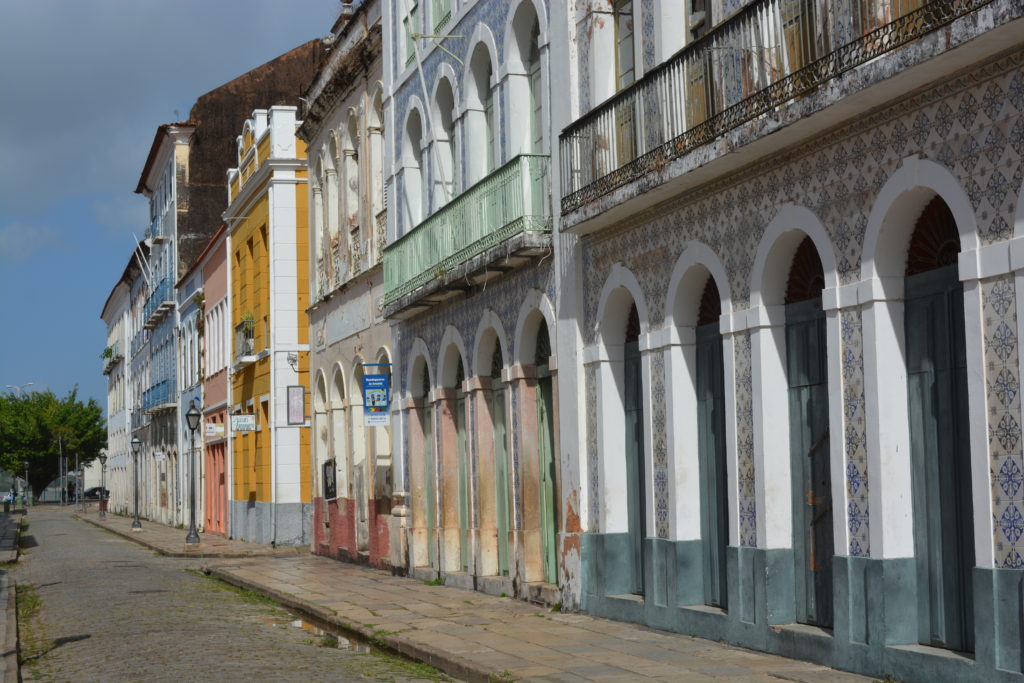
Further along the coast from Belém is the UNESCO town of São Louis. Here parts of the old city centre have been restored, though there is still lots of work to do, and the city offers an unusual mix of both French and Portuguese architecture. In addition to its French history, São Louis also offers an intoxicating mix of Afro-Brazilian culture which at night the crumbling centro histórico comes to life with reggae music. The costumes and all the stories of the Bumba-Meu-Boi are also worth checking out at the Cultural Centre.
4. Parque Nacional de Lençóis

The sand dunes, beaches and creeks and rivers that make up Parque Nacional de Lençóis is one of the most spectacular sites in all of Brazil and is well worth the effort to get there. The sand dunes sit amongst hundreds of crystal clear freshwater lagoons, all very close to the North Atlantic. To appreciate the full splendour of the lagoons it is necessary to take a small aircraft from Barreirinhas where you can get the whole scale of the park.
The creeks and rivers that make up the park are also the home to some amazing wildlife, the undoubted highlight being the migration of the endangered scarlet ibis at sunset to a couple of small islands near Parnaíba. The 100s of scarlet ibis roost in the trees and look like Christmas decorations.
5. Jericoacoara

The North East Coast of Brazil is full of some of the most amazing beaches in the world. To the west of the large city of Fortaleza is Jericoacoara, which can only be accessed by beach buggy. This gives the resort a slightly out of world experience. Watching the sunset from on top of the Pȏr do Sol dune is a highlight. With the absence of pollution and the disposition of the suns ray, the sunset also can have green tinges. The main street on the way down to the beach is full of caipirinha stores enabling visitors to lazily watch the sunset with Brazil’s signature drink.
6. Canoa Quebrada

Further along the coast is Canoa Quebrada which is less remote than Jericoacoara and has the same amazing beaches and dunes. The cliffs near the town are a deep orange colour and have colourful fishing boats lined up in the small foothills. Horse riding on the beach and through the waves is a great experience.
7. Praia de Pipa

Near the city of Natal is Praia de Pipa, with its clear water, lagoons and clean beaches is another beach not to miss. The town of Praia de Pipa is more developed than both Jericoacoara and Canoa Quebrada and offers a full range of beach resort facilities.
8. Olinda
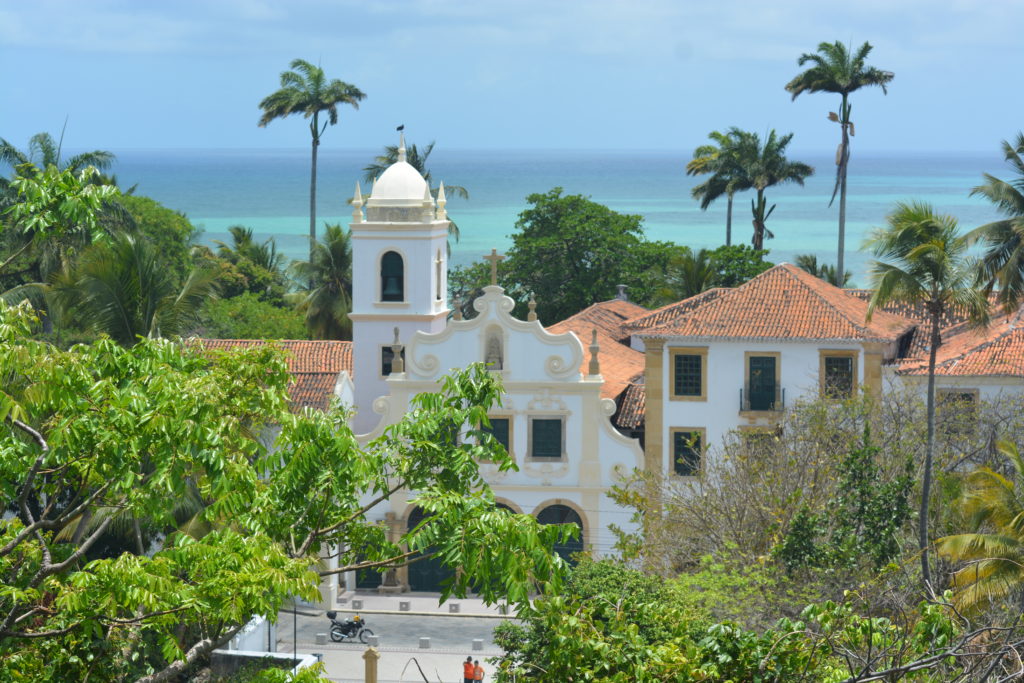
The old colonial town of Olinda just outside of Recife, has to be one of the prettiest of all the large colonial towns in Brazil. Many of the old Portuguese buildings have been restored and give a glimpse of what could be achieved by São Louis and other less restored towns. The centre of the town is the Alto de Sé, where there a a few churches and a promenade which at night comes to life with many stalls and both locals and visitors enjoy a cold beer or caipirinha to watch the sunset.
The Convento de São Francisco is a great example of an old Portuguese church and has some beautiful old tiles depicting scenes from both Portugal and Brazil. As with other Brazilian cities there are churches to all the principal Catholic Saints, most of which have been restored.
9. Salvador de Bahia

Brazil’s first capital was Salvador de Bahia and today it is one of the major cultural centres of Brazil. It beats with a unique vibe where the Afro Brazilian culture is at its strongest. The carnival is famous for being one of the best in Brazil. Over recent years many of the old colonial buildings have been restored and also since of first visit back in 2014, the city feels that it has made some strides in improving the security situation.
The narrow cobbled streets, colourful buildings and numerous colonial churches make the centro histórico one of the most beautiful in Brazil. There are lifts down to the old water front and the commercial centre of the city, but most visitors will stay in the old centro histórico where there are numerous bars and restaurants that take over the streets. The Bihar cuisine is another big draw with heavy use of cocoanut in the moqueca seafood dishes should also be tried.
10. Praia de Forte & Itacaré

North of Salvador is the upmarket resort of Praia de Forte, with its boutique shops and expensive condominiums. The resort has a twee church and one of the Project Tamar turtle conservation centres. To the south of Salvador is the surfing resort of Itacaré, which with its small bays is makes it well suited to the many surfers that come here and is somewhat different to the beaches to the further north.
11. Parque Nacional de Chapada Diamantina
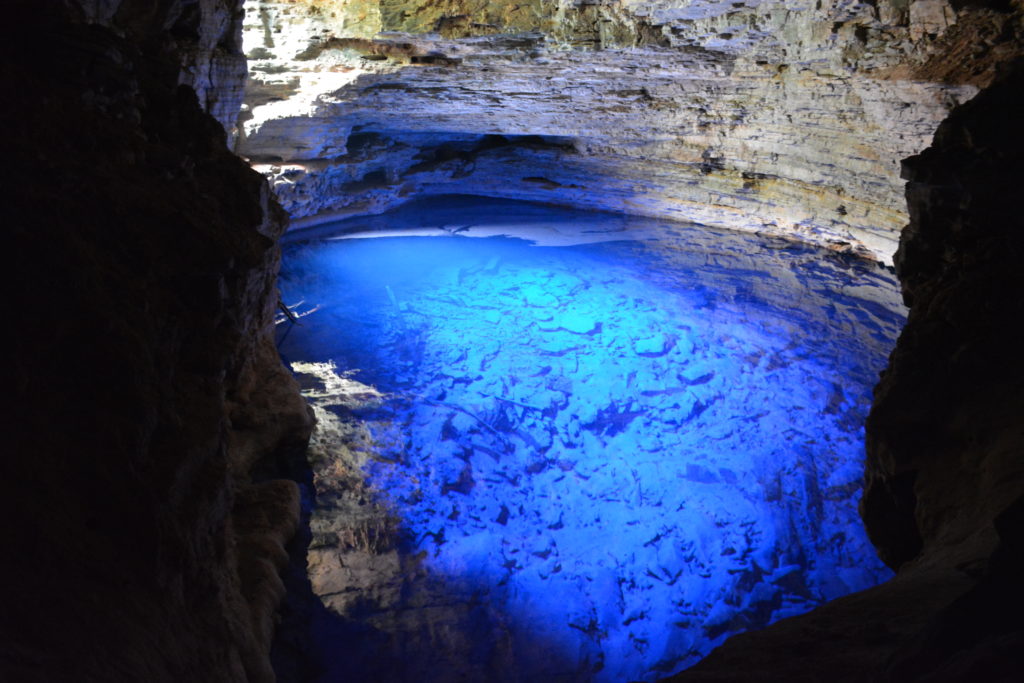
Inland from Salvador is the Parque Nacional de Chapada Diamantina, which centred round the small town of Lençóis offers some good trekking landscapes with many fine waterfalls. Probably the highlights are the underground caverns where the combination of water and light generate a deep blue colour and present some unusual swimming experiences underground.
12. Parque Nacional Chapada dos Veadeiros

On the way towards Brasilia is another of Brazil’s national parks, Parque Nacional Chapada dos Veadeiros, which while having less vegetation than Parque Nacional de Chapada Diamantina offers more fine trekking. The minerals in the area are full of quartz which with the sun make the whole area sparkle. The waterfalls and surrounding pools also make for popular swimming locations.
13. Brasilia

Brazil’s modern capital Brasilia is a showcase to modern architecture and while very modern, it feels a big like a set out of the 1950s vision of what the future of cities would look like. The city is built for the motor car and designed round integrated communes. Much of the city was designed by Oscar Niemeyer and sponsored by the enlightened Brazilian President Juscelino Kubitchek in the 1950s and was built in less than 1,000 days, something incomprehensible to today.
The principal buildings are some of the most impressive pieces of modern architecture in the world with clever usage of glass and shapes. The Catedral Metropolitan is like an inverted crown of thorns, with a spacious light interior. The blue glass in the Santuario Dom Bosco is another highlight, again with large open internal spaces.
14. Diamantina
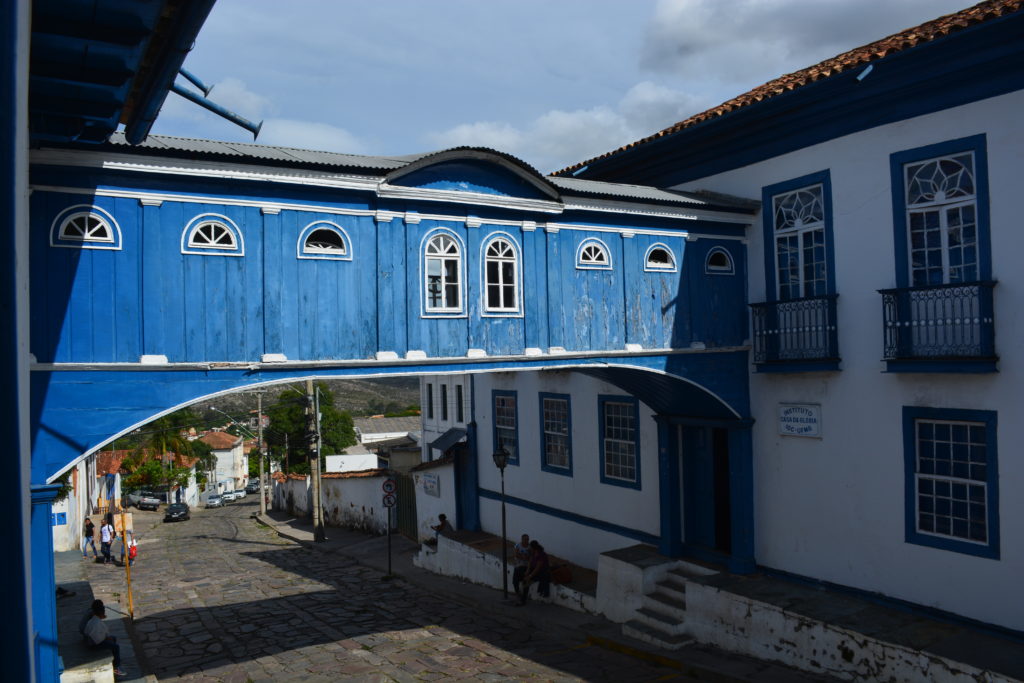
The small UNESCO town of Diamantina in the heart of Minas Gerais is well worth the detour. It is relatively remote, but is accessible from Belo Horizonte by bus. Diamantina is the home town of former Brazilian President Juscelino Kubitchek and has an interesting museum of the house where he grew up. The town itself has some attractive churches and cobbled streets, none more so that the colourful bridge that forms part of Casa de Glória that is Brazil’s version of the “Bridge of Sighs”
15. Belo Horizonte

Minas Gerais’s capital Belo Horizonte is a prosperous city with a large university and makes for a change from the principal tourist destinations and a comfortable place to experience a more natural part of Brazil. Its prosperity centres on both agriculture and the mining that goes on all over the state. Belo Horizonte is also famous for football fans, in the last World Cup it was where Germany beat Brazil 7 – 1 and in an earlier World Cup was where England lost to the USA. There are some grand buildings, especially those built by Oscar Niemeyer around Pampulha Lake, but the main reason to visit Belo Horizonte is soak up the atmosphere of a modern Brazilian city, which is also one of the safest of the large Brazilian cities.
16. Ouro Preto

If you only have time to visit one Minas Gerais’ old colonial mining towns, then Ouro Preto is probably the one you would visit. It set across a number of steep hills with many old colonial buildings and baroque churches. The centre is full of tourist bars and restaurants but it is very easy to wander down some small cobble stoned back streets and escape the tourists.
It is worth visiting one of the old mines in the town, to see what conditions used to be like for the slaves, who generally worked the mines. It was a very tough life, made worse by the fact that Brazil was late in abolishing slavery in 1888.
17. Rio de Janeiro

Rio de Janeiro’s setting in and around the Guanabara Bay has to be one of the most stunning of all world cities, with some of the best urban beaches and outstanding views from many of the surrounding forested hills. The Copacabana and Ipanema beaches are where Brazil and the rest of the world comes to party. Life on the beaches with many beach bars, beach volleyball, exercise gyms, sun loungers and many beautiful people together with the back drop of the Pão de Açucar has to be near the top of most bucket lists.
Trips to the top of Pão de Açucar and the Corvocado offer stunning views of the beauty of the city. The crowds at the Cristo Redentor at top of the Corvocado can be tight but the clean lines of the statue rightly justify its place as one of the modern wonders of the world. Old Rio de Janeiro especially the old Centro, Gloria and Lapa contain some wonderful old colonial buildings and also some fine examples of modern architecture like the Nova Catedral Metropolitana and is well worth time out from the beaches and other sites to explore.
At Mardi Gras, Rio de Janeiro comes to life with the week long celebration of Carnival. The whole city feels like one big street party for a week and seeing all the work that goes into the costumes and floats by the Samba Schools is something else.
18. Paraty

The old colonial port of Paraty lies some 300 kilometres south of Rio de Janeiro and sits in the middle of the scenic Costa Verde. Paraty was originally established as the port to support the export of the gold and minerals from Minas Gerais to Portugal, but after the trade moved to Rio de Janeiro Paraty became a bit of a backwater. Today it is an attractive colonial port that has been able to retain its original character.
Most of the streets retain their original cobbles and at night give way to many bars and restaurants. Motor traffic is largely excluded from the old centre which makes the town very pleasant and laid back. Also at high tide the streets have been designed to allow the rising tide to flow in and effectively act as a natural street cleaning mechanism. Many small crabs live in the sand in between the cobbles. The surrounding countryside and coast line is full of many isolated bays and beaches and is an important example of a sub-tropical coastal forest.
19. São Paulo
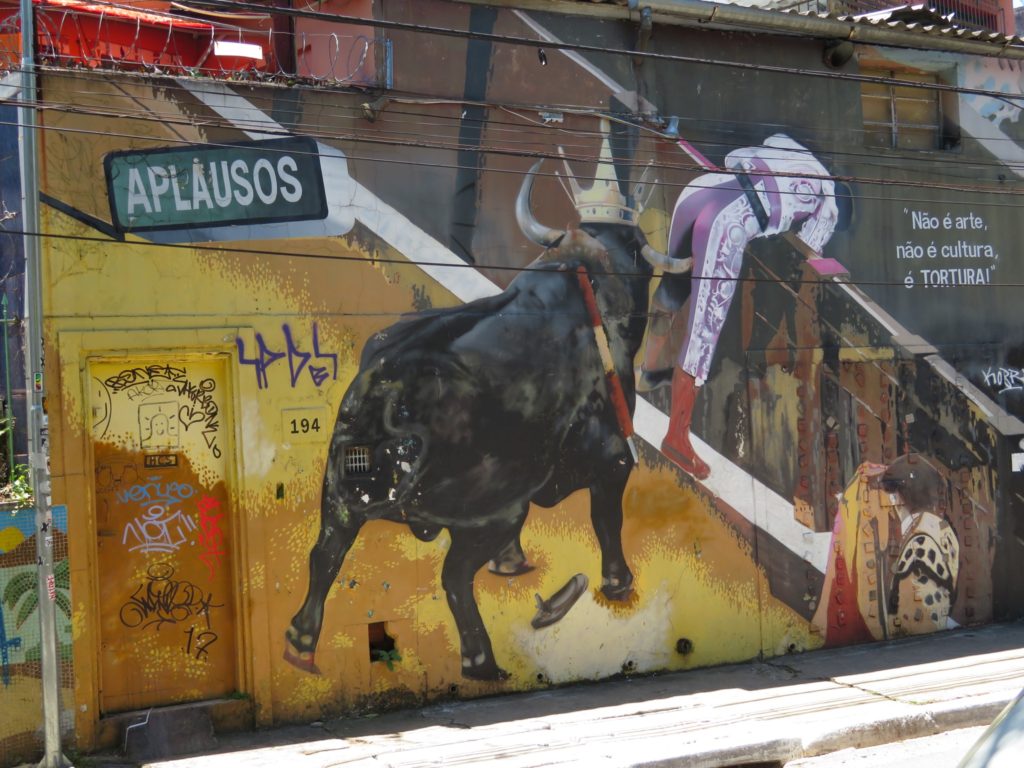
São Paulo is big, indeed with a population of 21 million in the metropolitan area it is easily the largest city in the souther Hemisphere. It is Brazil’s economic powerhouse with much of Brazil’s industrial output and also a significant amount of agriculture. While Rio maybe brazil’s party capital, São Paulo is where the money is made to support it.
While the city is full of freeways and many tower blocks, the old centre and the Jardins area have many worthwhile sites to visit. The MASP museum has to be one of the most unusual art museums in the world with each painting individually displayed in rows in the big cavernous floor. The information on the painting is at the back of each picture forcing you to appreciate the painting for what it is rather than making your judgement based on the artist. The frames also form part of the exhibition.
The street art in São Paulo is some of the best in Latin America, and there is some fierce completion for this title. Beco Batman contains some of the best street art and also with its bohemian student atmosphere is one of the city’s highlights.
20. Foz do Iguaçu

The Iguaçu Falls are rightfully know as one of the world greatest natural wonders and having been to both Niagara Falls and Victoria Falls they are probably the most impressive of the worlds top three falls. The scale of the falls, especially in the wet season is immense with a span of 2.7 kms wide and the views of the various subsidiary falls on from the Brazilian side making a spectacular panorama. The immense power of the principal falls, the Garganta del Diablo or Devils Throat with a drop of 80 metres and an impressive enormous flow of water.
Both sides of the falls are situated in protected a national parks with stunning subtropical flora and fauna including the iconic jaguar. To fully appreciate the falls requires time on both the the Brazilian side to get the panoramic views and the Argentinian side to get right close to all the major falls including the Garganta del Diablo.
21. Curitiba

Curitiba is one of the wealthiest in all of Brazil, complete with a modern transport system and many high rise condominiums. The city’s highlight is the Museu Oscar Niemeyer which is one of the finest examples of Niemeyer’s work. The museum focal point is a giant eye shaped construction, clad in yellow tiles that is completely unique. Inside the museum are many exhibits and stories of the great architects work.
The other principal attraction in the city is the Botanical Gardens complete with an Art Nouveau Greenhouse and many fine examples of sub-tropical trees, flowers and plants.
22. Florianópolis

Further south is attractive resort of Florianópolis and Ilha Santa Catarina. Floripa as it is more commonly known is now a major beach resort and holiday centre, catering for local Brazilian and also many Argentine and Uruguayan visitors. The beaches in Ilha Santa Catarina offer some fine surfing and many kilometres of well kept pristine sand. In between the beaches are many attractive headlands and dunes.
23. Port Alegre

Brazil’s southernmost major city Porto Alegre is at the heart of Brazil’s cattle industry and has much in common with the pampas / estancia culture of neighbouring Argentina and Uruguay. It is not a place for vegetarians and the quality of the beef, much of it depended from original British stock is some of the finest in the world and this has given Porto Alegre the accolade of being the home of some of Brazil’s finest churrascarias. With so much fine food the highlight of Porto Alegre is the area around the central market. The surrounding suburbs have many pleasant parks, gardens and tree lined avenues and together with its sub-tropical climate make it one of the pleasant places to live in Brazil.
Blogs
- Belo Horizonte
- Diamantina – Diamonds
- Paraty
- Rio de Janeiro
- Ouro Preto – Black Gold
- Brasilia – Brazil’s Futuristic Capital
- Parque Nacional Chapada dos Veadeiros
- Parque Nacional da Chapada Diamantina
- Itacaré – Centre of Brazilian Surfing
- Salvador de Bahia
- Olinda and the Brazilian North East
- Northern Brazilian Beach Resorts
- São Luís and Lençóis Maranhenses National Park
- The Amazon Delta – Macapá and Belém
- Manaus – Heart of the Amazon
- Porto Alegre – Beef
- Rio de Janeiro – Carnival Hangover
- Rio de Janeiro – Carnival
- Rio de Janeiro – City Tour 9th February
- Rio de Janiero – Plans for Carnival
- Florianópolis- Beach, Mate and Families
- Curitiba – Niemeyer and Botanical Gardens
- Intercity Bus to Curitiba – Green Valleys and Booming Agriculture
- Foz do Iguaçu – The Thunder of Water and Legends
- São Paulo – Traffic Free Day
- São Paulo – Cemeteries and Graffiti
- São Paulo – Day One in Brazil
Slide Show
Travel
When you cross the border from the rest of South America into Brazil, you’ll notice a significant step up in the quality of the roads, with many dual lanes highways linking the major cities. This makes intercity bus transport easy and also good value. Long distance bus journeys will break their journeys in the many service stations which have acceptable facilities and will have a churrascaria restaurant. With the vast distances, Brazil also has a comprehensive budget airline network which can cover vast distances relatively cheaply. Generally across South America domestic internal flights are good value, international flights are much more expensive.
The metros in both Rio de Janeiro and São Paolo are good value and a relatively safe way to travel. Taxis are numerous, including web based firms like Uber. indeed it is often best to book taxis through Uber or get your hotel to arrange for them to pick you up. Most taxis do not take cash, and instead take debit cards.
Travelling in the Amazon region is by river boat and is an experience not to be missed. The journey from Macapá to Belém across the Amazon delta takes around 26 hours and is over 560 kilometres. The ferries have big open plan decks and the passages claim their place by pitching their hammocks from the hooks in the roof.
Costs
Brazil is a good value destination and the Brazilian Real or BRL while we were travelling was slowly depreciating against the USD. Brazil probably has the most advanced banking system in all of South America and makes extensive use of debit cards and electronic payments. Indeed it is not uncommon to see street vendors using electric card readers for payments. Using your debit cards in ATMs is generally safe, some banks charge a local fee for withdrawals, but while we were there Bradeso Bank did not charge any local fees. The amount of cash you can withdraw varies from bank to bank, and sometimes it is a bit of guesswork to workout the maximum amount of cash you can withdraw.
Accommodation
There is a full range of accommodation options all over Brazil, from the standard international hotels common place in all major cities to a whole variety of smaller hostels and boutique hotels. For the most part we used web based sites like booking.com to source our accommodation. The advantage of booking.com is that often you do not have to pay the full cost of accommodation in advance, the site often takes 50% on booking and the rest when you arrive, unlike other sites like expedia.com, etc.
Places we Stayed
- Rio de Janeiro: Copacabana Suítes by Atlantica Hotels
- Rio de Janeiro: Argentina Hotel
- Paraty: Pousada do Tesouro
- São Paulo: ibis São Paulo Paulista Hotel
- Guarulhos: ibis Guarulhos Hotel
- Curitiba: San Juan Johnscher
- Florianópolis: Pousada Mares do Santinho
- Porto Alegre: Hotel Laghetto Viverone Moinhos
- Foz do Iguaçu: Belmond Hotel das Cataratas
- Belo Horizonte: Royal Boutique Savassi Hotel
- Diamantina: Casa Atunes
- Ouro Preto: Hostel Bramus
- Brasilia: Albergue da Juventude
- Alto Paraiso: Camping Pachamama
- Lençois: Pousada & Camping Lumiar
- Itacaré: Pousada la Cabana
- Salvador de Bahia: Pousada de Mangueira
- Aracaju: Pousada do Farol
- Olinda: Pousada São Francisco
- Praia da Pipa: Pousada Sol da Pipa
- Canoa Quebrada: Pousada Barboleta
- Jericoaoara: Pousada Paraíso
- Barrreirinhas: Pousada do Rio
- Atins: Pousada Irmão Atins
- Parnaiba: Vila Parnaiba
- São Luis: Pousada Colonial
- Belém: Hotel Unidos
- Macápa: Frota Palace Hotel
- Oiapoque: Hotel Tropical
- Boa Vista: Hotel Euzebios
- Manaus: Hotel Saint Paul



